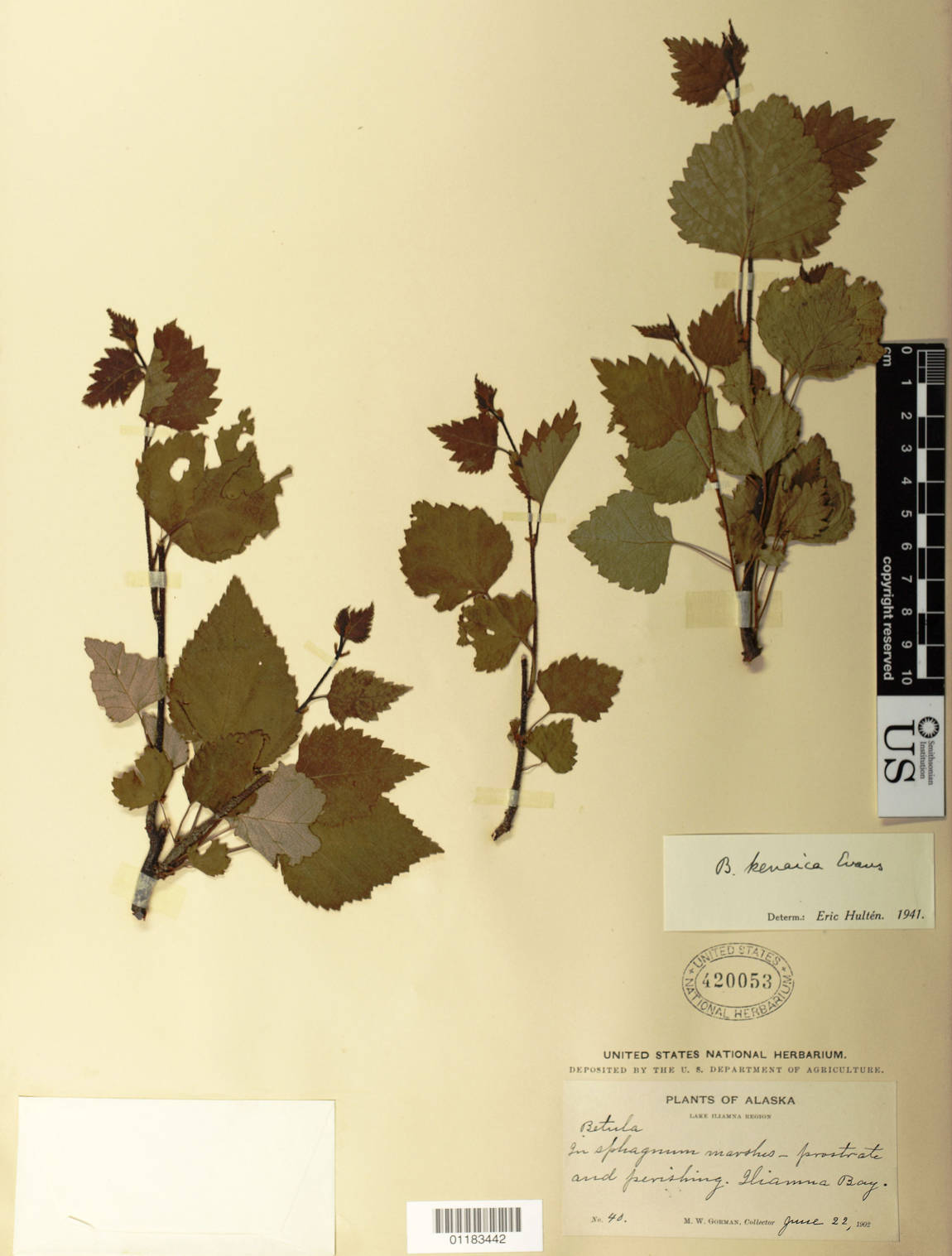Did you know there are two species of native birches on the Kenai Peninsula? Well, actually three if you count the dwarf birch (Betula nana), a common shrub in many of our wetlands. But I’m focused on our two birch trees, the Alaska Birch and Kenai Birch, either of which you might mistakenly think is the same Paper Birch (B. papyrifera) that canoes were made from in Last of the Mohicans (and also happens to grow in Southeast Alaska).
The Alaska Birch (B. neoalaskana), despite its name, is not constrained to Alaska but grows over much of the boreal forest from Norton Sound eastward across Interior Alaska to western Ontario. Here on the Kenai Peninsula, Alaska Birch is most common on the northern half.
In contrast, the Kenai Birch (B. kenaica) is very much an Alaskan species, growing south of the Chugach Mountains and west of Prince William Sound and the Cook Inlet including the Alaska Peninsula and Kodiak. There are some reports of it growing in west-central Yukon Territory, but most of the evidence suggests it is endemic to south-central Alaska. Kenai Birch is most common on the southern half of the Kenai Peninsula.
Kenai Birch was first described by Walter Evans in the Botanical Gazette in 1899. Mr. Evans reported this new species growing in Sunrise, back when it was a thriving mining town on Turnagain Arm. It was locally known as red or black birch, generally growing in association with Sitka Spruce. Interestingly, he observed that the trunks of old trees are dark and fissured, bearing “a striking resemblance to that of Prunus serotina” or wild black cherry. The following year, he found Kenai Birch growing in abundance at “Kussiloff” (aka Kasilof) and surmised that is was likely well distributed on the peninsula, at least on its western side.
Both species are forest trees that can reach heights of 80 feet and diameters of eighteen inches (Kenai) and 24 inches (Alaska) or more. Bark of mature trees from both species are generally white or off-white, but range widely from brownish to reddish to gray or white in the Kenai Birch, and from red to off-white (pinkish, grayish, yellowish) to strikingly white in Alaska Birch. Both species have ovoid to triangularly-shaped leaves. Both species occupy wet and dry habitats and varying soil types. I hope this is as confusing to you as it is to me. Dr. Edmond Packee, a forestry professor at the University of Alaska Fairbanks, notes the greatest difficulty in distinguishing Alaska’s birches will be where Kenai and Alaska Birch overlap, which basically describes our situation on the Kenai Peninsula.
But here are some useful distinguishing characteristics. Alaska Birch has larger leaf blades generally more than 5 cm long with 5–18 pairs of lateral veins, and their apex tends to be acuminate (long taper to a point). Kenai Birch’s leaf blades are mostly less than 5 cm long with 2–6 pairs of lateral veins, and their apex tends to be acute to short-acuminate (see photo).
Another interesting difference is that the mature bark of Kenai Birch naturally peels in very thin layers, often admitting considerable light (translucent). In contrast, Alaska Birch’s bark peels away easily in thicker layers that admit little or no light, and reportedly make better bark baskets and bowls.
Although overlapping in their distributions, their differences suggest that Alaska Birch prefers a more continental climate with colder winters than what our more regionally-adapted Kenai Birch seems to prefer, but not necessarily warmer summers as Kenai Birch is more common on the southern peninsula. Typical soil temperatures of birch stands around Fairbanks range from 48 to 52 degrees during the growing season, temperatures being exceeded now on the western Kenai Peninsula, more so near the City of Kenai than Homer. In our warming climate, it may be that Kenai Birch is favored over Alaska Birch on the peninsula. In more extreme climate scenarios, cottonwood, which prefers soil temperatures from 46 to 57 degrees, may be favored over either birch when soils are disturbed. Regardless, this will be tough to observe if you can’t tell the difference between the two birch species.
Dr. John Morton is the supervisory biologist at Kenai National Wildlife Refuge. Find more information about Alaska birch taxonomy athttps://www.uaf.edu/files/snre/Agro%2036-1.pdf. Find more information about the Refuge at http://www.fws.gov/refuge/kenai/ orhttp://www.facebook.com/kenainationalwildliferefuge.

